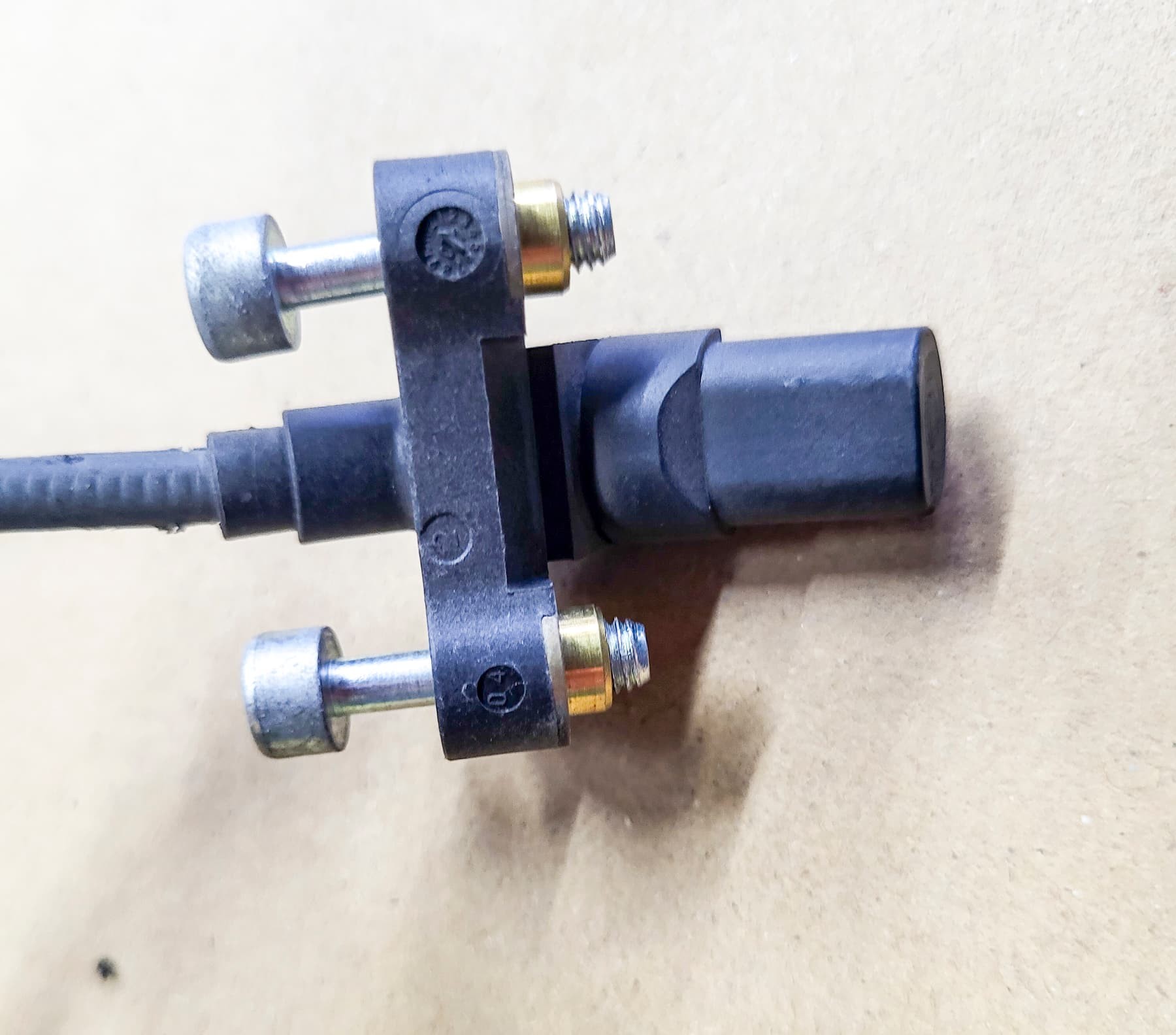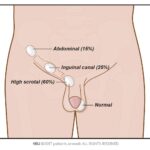When your VW Rabbit starts acting up, especially with ignition issues, it can throw a wrench into your daily routine. These quirky German cars, while generally reliable, can sometimes present perplexing problems. In this article, we delve into a real-world case study from Pawlik Automotive in Vancouver, where expert mechanics tackled a 2009 VW Rabbit with intermittent starting and stalling problems. Learn how their systematic approach to diagnosis pinpointed a faulty engine speed sensor, resolving the vehicle’s unreliable ignition and getting the owner back on the road with confidence.
Unraveling the Mystery: Customer Complaint and Initial Symptoms
The owner of this 2009 VW Rabbit sought help after experiencing a series of concerning issues. The car had stalled unexpectedly while driving on a couple of occasions and, frustratingly, sometimes refused to start at all. While the owner wasn’t sure if the engine was cranking during these no-start episodes, the overall picture was one of unreliability. Adding to the complexity, another shop had previously replaced the battery and performed some checks, but the problem persisted. Losing faith in the initial diagnosis, the owner brought their VW Rabbit to Pawlik Automotive, seeking a fresh perspective and hopefully, a solution.
The Diagnostic Journey Begins: Questioning the Customer
At Pawlik Automotive, the diagnostic process always starts with a crucial step: gathering detailed information from the vehicle owner. Experienced service advisors understand the importance of asking the right questions to understand the nuances of the problem. As Bernie Pawlik explains, even after years in the business, there are always more questions to be asked.
To effectively diagnose intermittent issues like this VW Rabbit’s starting problem, specific details are vital. The team probed into when and how the problem occurred:
- When does it happen? (Cold starts, warm starts, after driving for a while?)
- How does it happen? (Sudden stall, slow crank, no crank, etc.)
- Are there any patterns? (Weather conditions, driving conditions, etc.)
Encouraging vehicle owners to pay close attention to these details significantly aids in the diagnostic process. In this case, the owner provided a valuable piece of information: on one occasion when the car wouldn’t start, a portable code scanner revealed a P0322 code. This code, relating to the engine speed sensor circuit, offered a crucial starting point for the Pawlik Automotive team.
Verifying the Problem and Initial Tests: Long Cranking and Trouble Codes
The first step at the shop was to verify the customer’s complaint. Fortunately, the intermittent nature of the problem seemed to cooperate, at least partially. When technician Jordan attempted to start the VW Rabbit, he immediately noticed an issue: the engine cranked for an extended period before finally starting. This long cranking symptom, even if the stalling issue wasn’t immediately replicated, confirmed a starting problem existed.
Next, a scan of the vehicle’s computer system was performed to check for any stored trouble codes. As anticipated from the owner’s information, the P0322 code – Engine Speed Sensor Circuit – was indeed present. This code solidified the direction of the diagnosis, pointing towards a potential issue with the engine speed sensor or its circuit.
Pinpointing the Culprit: Engine Speed Sensor Diagnosis and Replacement
With the P0322 code as a strong lead, the technicians focused their attention on the engine speed sensor. Diagnostic testing of the sensor itself revealed that its resistance values were out of specification. While a sensor can sometimes fail even with acceptable resistance readings, these out-of-spec values strongly indicated a fault within the sensor.
Based on this evidence, the team recommended replacing the engine speed sensor. They explained to the customer that while other issues might be present, addressing this identified fault was the logical first step. The customer agreed, and the replacement of the engine speed sensor proceeded.
Understanding the Engine Speed Sensor’s Vital Role
To understand why a faulty engine speed sensor would cause these ignition problems, it’s important to know its function. The engine speed sensor, also known as a crankshaft position sensor, plays a critical role in providing essential information to the vehicle’s engine control unit (ECU), or computer.
This sensor essentially tells the computer how fast the engine is rotating. While Bernie Pawlik mentions that some VW models, including this Rabbit, may also utilize a TDC (Top Dead Center) sensor, the engine speed sensor is crucial for determining crankshaft position and speed. In conjunction with a camshaft position sensor (which monitors valve timing), the computer uses this data to precisely control:
- Ignition Timing: When to fire the spark plugs to ignite the air-fuel mixture.
- Fuel Injection Timing: When to activate the fuel injectors to deliver fuel into the cylinders.
Without accurate engine speed information, the computer struggles to synchronize these critical processes. It may delay starting, cause intermittent stalling, or even prevent the engine from starting altogether. In this case, the faulty sensor was likely providing erratic or incomplete data, leading to the VW Rabbit’s ignition issues.
The Repair Process: Accessing and Replacing the Sensor
Replacing the engine speed sensor on this VW Rabbit is a relatively straightforward procedure. Located underneath the vehicle, near the transmission bell housing, the sensor is typically bolted in place.
Looking at the images provided by Pawlik Automotive, we can see the sensor and its components. The sensor itself is a cylindrical component that mounts to the engine block or bell housing. A wiring harness connects the sensor to the vehicle’s electrical system.
The replacement involves:
- Locating the sensor: Underneath the vehicle, near the transmission bell housing.
- Disconnecting the wiring harness: Carefully detach the electrical connector from the sensor.
- Unbolting the old sensor: Remove the bolt(s) securing the sensor to the engine.
- Installing the new sensor: Mount the new sensor, ensuring proper alignment.
- Reconnecting the wiring harness: Securely connect the electrical connector.
The process is generally accessible and doesn’t require extensive disassembly, making it a reasonably efficient repair.
 2009 VW Rabbit Start Issues
2009 VW Rabbit Start Issues
Successful Outcome and Lesson Learned: Focus on Accurate Diagnosis
After replacing the engine speed sensor, the 2009 VW Rabbit’s starting issues were completely resolved. The car started promptly and reliably, much to the relief of the owner and the satisfaction of the Pawlik Automotive team. This successful repair highlighted the importance of accurate diagnosis in resolving complex automotive problems.
Bernie Pawlik speculated on why the previous shop might have replaced the battery. It’s possible the battery was indeed weak or failing, and replacing it addressed a separate, pre-existing issue. Alternatively, a weak battery could sometimes mimic starting problems, leading to a misdiagnosis. However, in this case, the faulty engine speed sensor was the root cause of the intermittent starting and stalling.
This case serves as a reminder that even with modern diagnostic tools, careful questioning, systematic testing, and expert knowledge remain crucial for effective auto repair. Relying solely on trouble codes or jumping to conclusions can lead to misdiagnosis and unresolved issues. Pawlik Automotive’s commitment to thorough investigation and accurate diagnosis ensured a successful outcome for this VW Rabbit owner.
If you’re experiencing ignition problems or starting issues with your VW Rabbit or any other vehicle, seeking expert advice and a comprehensive diagnostic approach is essential. Pawlik Automotive in Vancouver, with their experienced team and dedication to customer service, are well-equipped to tackle even the most challenging automotive mysteries. You can find more information and contact them through their website at pawlikautomotive.com or by calling them at (604) 327-7112.
